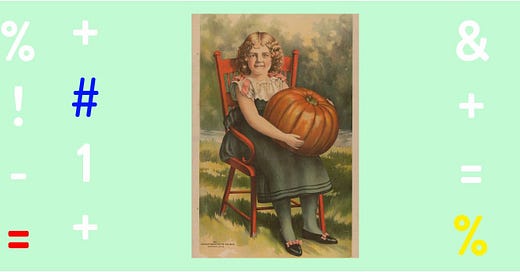How to resist temptation this week
Three things we can do instead of collapsing into blame and worry.
There are so many temptations at a time like this.
The temptation to break open the Halloween candy before the first trick-or-treater arrives. 🍬 To dress like it’s fall when it still feels like summer. 👢
Or to succumb to blame, loathing and contempt—playing right into the hands of conflict entrepreneurs.
It helps, in my experience, to have something better to do instead. I don’t have all the answers, but here are 3 things I’m doing to resist temptation this election season:
Practicing counterintuitive conflict.
To function in a dysfunctional time, you gotta do counterintuitive things. But it’s hard to remember this in the heat of the moment.
Which is why, over at Good Conflict, we created this brand new, easy-to-use Starter Kit—to remind ourselves and everyone else what to do (and not do) when times get tough.
It's a free, downloadable toolkit that will walk you through the difference between High and Good Conflict, identify the four fire starters that make conflict toxic and suggest six counterintuitive actions to interrupt conflict. Personally, I keep these reminders on my wall, for when I forget.
Surrendering to pessimism in the 11th hour (but not before).
I interviewed an expert on uncertainty last week to learn how she was managing her anxiety in the runup to the election (answer: surprisingly well!) My latest column lays out her best advice for managing your worry this week—including a couple of suggestions that I definitely did not see coming.
Reading news that leaves me more curious, not less.
I’ve consumed zero news stories about polling results this election season, and I recommend it. My brain wants to read these polls because my brain wants to predict the future. But my brain wants to do lots of silly things.
Instead, I’d rather watch this webinar on covering elections more creatively by Smartocto, Trusting News and the Solutions Journalism Network. Or read Michael Lewis’ startlingly good (and funny) profile of a federal worker and former coal miner who quietly figured out how to stop coal mine roofs from collapsing.

But oh, what about the candy?! How can we resist?
On Halloween, my husband makes a special cocktail he calls the Bourbon Boo (warm apple cider, 1 sprig of rosemary, 1 shot of bourbon, cinnamon sugar around the rim).
We sit on our porch, sip our Bourbon Boos and greet the kids waddling up our steps. We don’t want their candy (much). We have our own.
Here’s to making more candy, literally and figuratively, so we don’t steal from babies,
Amanda
One Last Thought…

Finally, in case you missed it (or don’t want to pay for it), here is a Washington Post column I wrote on splitting a while back. It feels extremely relevant now, since we’re hurtling towards a presidential election in a culture and political system designed to make us split.
Let me know what you think in the comments below—and share your own tricks and tips for resisting temptations this fall.
Why we split the world into good and evil — and make decisions we regret
Humans carve the world cleanly in two when they feel threatened. There’s a right and a wrong, a good and an evil, an us and a them. In normal times, this behavior is most obvious in people with serious depression or borderline personality disorder. Psychologists call it “splitting.”
These days, we see a lot of splitting by all kinds of people, from students to senators. “This fight is barbarism against civilization, good versus evil,” Sen. Ted Cruz (R-Tex.) said after the Oct. 7 attacks on Israel. “The differences between the two sides are as stark as darkness and light.”
In times of high anxiety, each new conflict gets framed this way, a galactic struggle against a dark lord. Complexity is intolerable; ambivalence is cowardly. During the racial justice protests in 2020, all cops were bastards — or so the slogan went. You were either a racist or an anti-racist. “There is no inbetween safe space of ‘not racist,’” Ibram X. Kendi wrote.
Splitting is deeply comforting, down in your gut. It promises an escape hatch from chaos. If we read the right books and put up the right lawn signs, it whispers, “We can be safe here, on the side of good, far from them.”
Like most cognitive distortions, splitting makes us feel worse after it makes us feel better. Bright lines have a way of hardening into prison bars. “When besieged, we tend to raise our mental drawbridges and shut out new information just when it is needed most,” Maggie Jackson writes in her new book, “Uncertain: The Wisdom and Wonder of Being Unsure.” “The catch-22 is clear. We yearn for clarity when we know least about our predicament.”
We also start to misidentify our enemies — and our heroes. We can’t integrate information that doesn’t fit the narrative. Every day, our blind spots grow. When splitting, people “get stuck in either the thesis or the antithesis,” pioneering psychologist Marsha M. Linehan wrote, “unable to move toward synthesis.”
As President George W. Bush led the country into two catastrophic wars, he split the world into two oversimplified camps: the United States and evil. He referred to “evil” in 319 speeches, or nearly a third of all his speeches in his first 2½ years in office, according to Peter Singer’s book “The President of Good and Evil.” That kind of clarity felt reassuring to millions of Americans, but it left no room for doubt — or for reality. Iraqi dictator Saddam Hussein could be brutal and deceptive and pose no clear threat to the security of the United States. Many things can be true at once. People usually don’t fit into convenient categories, try as we might to sort them that way.
For example, about 20 percent of Israel’s citizens are Arab. Where do those 2 million people fit in a split universe? Last month, 70 percent of these Arab citizens said they felt part of Israel — up from just 48 percent in June. Meanwhile, among Jewish Israelis, less than 4 percent said they trust Prime Minister Benjamin Netanyahu as the most reliable source of information on the war against Hamas, according to another poll. How do we make sense of this? Splitting is a broken compass in a byzantine world.

Most of us feel unsure and conflicted about how to solve hard problems, from war in the Middle East to racism in America. When politicians and activists split us apart, and hear only from extremists, they lose touch with that reality. For years before Roe v. Wade was overturned, it was clear many Republicans did not fit neatly into the anti-abortion camp. About a third said they supported legal abortion if a woman wanted one for any reason, according to the 2021 General Social Survey. And yet, when voters in states including Kansas and Ohio protected abortion rights, it somehow came as a surprise to many political experts.
Likewise, when it comes to climate change, there are not two groups — deniers and believers — and there never were. Since 2008, researchers Anthony Leiserowitz and Edward Maibach have been tracking American public opinion on the subject, and they have identified no fewer than six groups — from the Alarmed to the Disengaged to the Dismissive — which have shifted in size over the years. (Want to find out which group you’re in? Take the Six Americas Quiz here! I am “Concerned.”)
The lesson here is to always assume that humans reside along a spectrum of behavior — if they fit anywhere at all. Journalists, in particular, must help us see this — by interviewing people who have changed their minds or who are unsure and don’t fit neatly into one camp. Amplify their voices; they are a lot like most of us.
One of the most helpful things I’ve read since the war in Gaza began was Lulu Garcia-Navarro’s interview with Israeli writer Etgar Keret for the New York Times. In the days after Hamas’s attacks, he felt the urge to split — and he was actively fighting it, working to see the fuller catastrophe, so to speak: “I think that in our souls, or our minds, or whatever you call it, there is something very complex, some ability to contain ambiguity, not to be swept with only one emotion. To be able to inhale the complexity of existing,” he said.
To Americans more than 5,000 miles away, feuding over whether this public school system or that college leader was sufficiently outraged, he had this to say: “That’s crazy. This idea of people saying: Condemn this, condemn that. I don’t want anybody to condemn anything. I say, be human. You see somebody in pain, try to see that pain.”
That may be the best advice for living in a time like this: “Inhale the complexity.” See the pain. Beware black-and-white thinking — and rest your tired eyes on the gray. That’s where all the action is.
© 2024 Amanda Ripley. See privacy, terms and information collection notice.





This is exactly what I needed to read this week on many levels. Thank you so much, Amanda. Your calm, authentic guidance is a gift.
The psychological construct of "splitting" has been described in a variety of ways over the years. Object relations theory describes splitting as a defense mechanism that is protective of the ego. Cognitive-behavioral therapy sees splitting as binary thinking. And more recently, Daniel Kahneman, in his book "Thinking Fast and Slow," describes System 1 and System 2 thinking. Splitting seems a function of System 1 thinking: fast, automatic, frequent, emotional, stereotypic, unconscious. It is "automatic" and in many situations can be very helpful. But as complexity increases System 1 thinking begins to get in the way. OTOH, System 2 thinking is built for complexity and is slow, effortful, infrequent, logical, calculating, conscious.